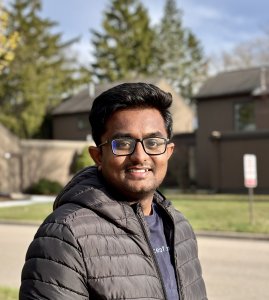Presented By: Earth and Environmental Sciences
Smith Lecture - Yadidya Badarvada, University of Michigan
What is an Oceanographer doing in Michigan? - Predicting Internal Tides using Supercomputers

"What is an oceanographer doing in Michigan?" is the question I am frequently asked upon sharing my role as a postdoctoral researcher at the University of Michigan. To answer that question, my talk with will pivot around two topics: internal tides and the billion-dollar NASA Surface Water and Ocean Topography (SWOT) mission. Internal tides are generated by tidal flows interacting with seafloor topography, causing vertical displacements at the boundaries between layers of differing oceanic densities. Breaking internal tides lead to subsurface ocean mixing which in turn exert a strong control on oceanic stratification, the meridional overturning circulation, and the storage and transport of heat and carbon in the ocean. Despite being most pronounced below the sea's surface, these internal tides also create a measurable sea surface height (SSH) signature, detectable by satellite altimetry. The advent of the SWOT mission has enabled us to observe the ocean with unprecedented resolution. To discern the wealth of information contained within the satellite observations, it is crucial to isolate and remove the internal tide signals. Our research demonstrates that supercomputer-generated ocean forecast models can effectively extract internal tide SSH contributions from satellite altimetry data, offering a skill level on par with direct satellite data analysis. The fundamental benefit of utilizing these models is their capability to reveal comprehensive ocean water column characteristics with high temporal resolution, a feat satellites cannot achieve. This capability presents an exciting opportunity to enhance our understanding of oceanic processes at scales never before possible.